Mary Cassatt
chronology
-
Event
-
May 22, 1844: Born in Allegheny City, PA to privileged parents who believed a good education required travel to Europe. Cassatt spent five years abroad, learning French and German.
-
At age 15, Cassatt began her painting studies at the Pennsylvania Academy of Fine Arts in Philadelphia. Because women were not allowed to study at the Academy, Cassatt enrolled for independent studies.
-
Cassatt moved to Paris with her mother and family friends where she applied to study with professors from L'cole des Beaux-Arts. Cassatt was accepted to study with Jean-Leon Gerome and visited the Louvre daily, where she would copy works of the masters. This also marked the year she joined a painting class with Charles Chaplin, noted genre artist.
-
Cassatt began studies with Thomas Couture. In the same year, A Mandolin Player, was accepted into the Salon.
-
Cassatt returned to the United States. While her father agreed to pay for her living expenses, he refused to pay for painting supplies and studio space, instead encouraging her to take a more conventional female role.
-
Cassatt traveled to Chicago where a large number of her paintings were destroyed by the Great Chicago Fire. The Archbishop of Pittsburg recognized her abilities and commissioned her to paint two copies of paintings by Corregio in Parma, Italy, paying for her travel and part of her expenses.
-
Two Women Throwing Flowers During Carnival was accepted into the Salon.
-
After extensive travel throughout Southern Europe, namely Madrid and Seville, Cassatt composed a group of paintings featuring Spanish subjects, including Spanish Dancer Wearing a Lace Mantilla.
-
Cassatt moved to France with sister, Lydia, where she decided to paint portraits to earn a living.
-
Two pieces were denied at the Salon despite one being accepted the following year. Cassatt would vocalize her disgust at the Salon's discrimination toward female artists.
-
Cassatt was approached by Degas to show with the Impressionists.
-
Cassatt composed Portrait of the Artist, Little Girl in a Blue Armchair and Reading Le Figaro. Cassatt also began studying pastels and copper engraving with Degas.
-
First exhibition with the Impressionists containing 11 paintings including La Loge. With her earnings, Cassatt bought a Degas and a Monet. Cassatt would also be included in Impressionist exhibitions in 1880-81.
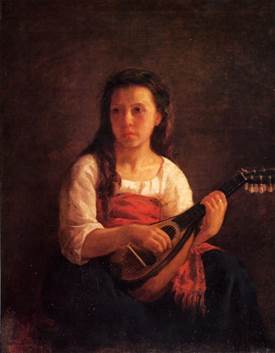
A Mandolin Player, 1868
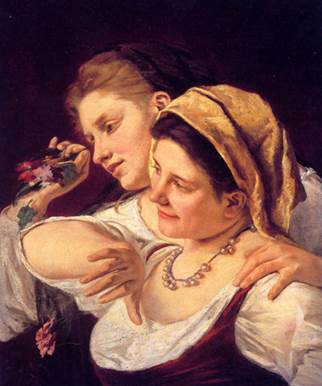
Two Women Throwing Flowers During Carnival, 1872
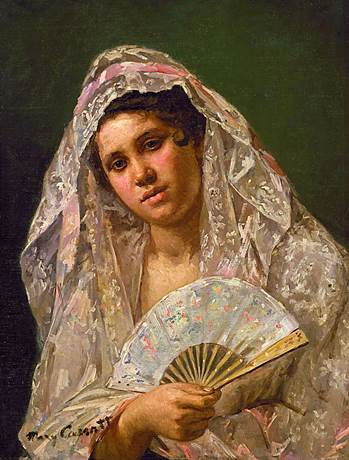
Spanish Dancer Wearing a Lace Mantilla, 1873
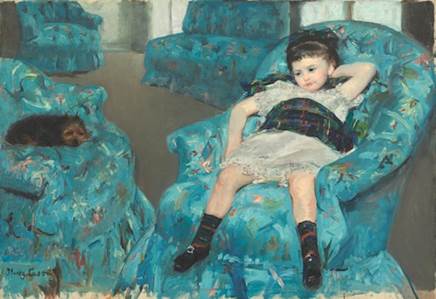
Little Girl in a Blue Arm Chair, 1878
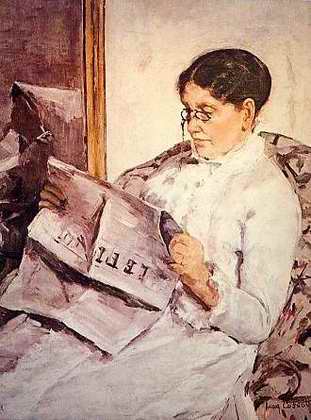
Reading Le Figaro, 1878
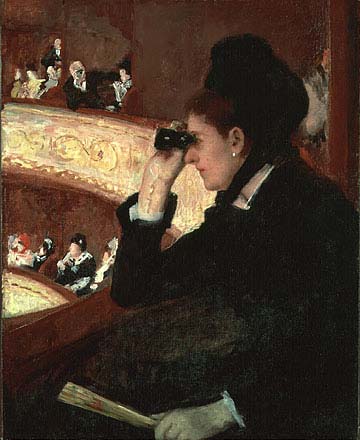
La Loge, 1879
-
Event
-
Mary Cassatt’s long-time companion and sister Lydia died, leaving Mary temporarily unable to work.
-
Cassatt began painting family portraits including Alexander Cassatt and His Son Robert Kelso.
-
Paul Durand-Ruel introduced Impressionism to America by curating an exhibition that included two of Cassatt’s paintings.
-
Cassatt’s subject matter shifts to depictions of mothers with their children, as in Gardner Held by his Mother.
-
1891: Cassatt exhibited drypoint and aquatint prints including Woman Bathing and The Coiffure. Around this time Cassatt also began serving as an advisor to many American art collectors, encouraging them to donate pieces that would serve as the foundation of many of America’s great art institutions.
-
Cassatt’s eyesight begins to fail.
-
Cassatt stops printmaking.
-
Cassatt was awarded the Legion d’Honneur for her art contributions. She also stopped painting in this year.
-
Cassatt traveled to Egypt.
-
Cassatt was diagnosed with diabetes, rheumatism, neuralgia and cataracts.
-
Cassatt exhibited 18 pieces to support the women’s suffrage movement.
-
Cassatt died at Chateau de Beaufresne and was buried at Mesnil-Theribus, France.
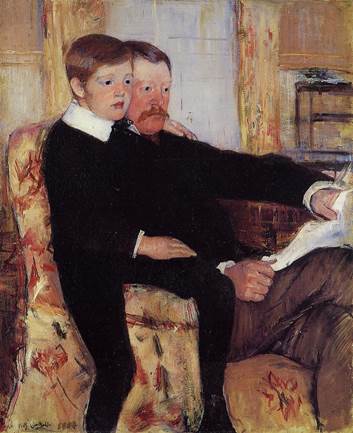
Alexander Cassatt and his son Robert Kelso, 1885
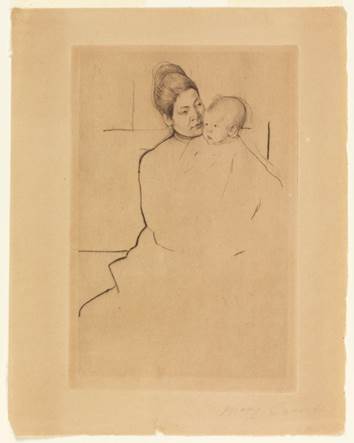
Gardner Held by his Mother, 1888
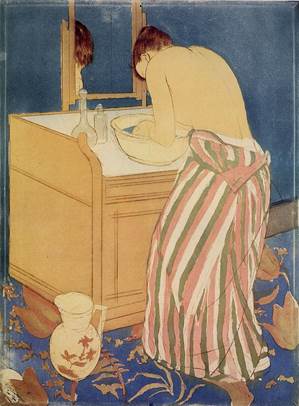
Woman Bathing, 1891
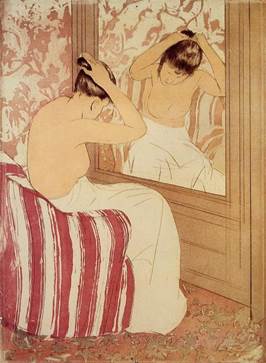
The Coiffure, 1891
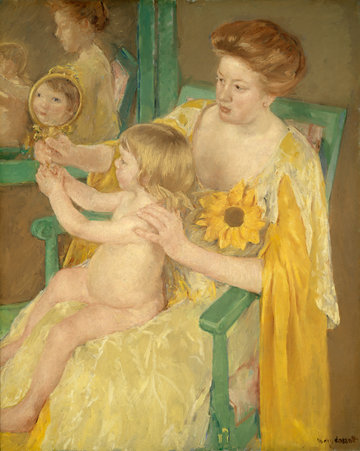
Mother and Child, 1905
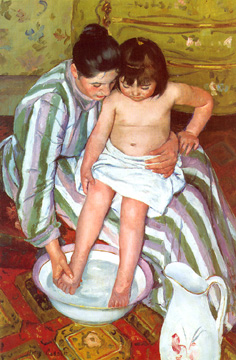
The Child’s Bath, 1893
